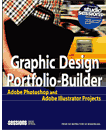
In just a few minutes you can create this cool duotone effect. Simply follow the steps below.
February/March 2005 Dynamic Graphics

Effect used in “My Favorite Things” Cooper Smith & Company Des Moines visitors guide, cover with duotone (V9N6).


Scatter brushes in Adobe® Illustrator® CS3 are intuitively named. They scatter a pattern along a path. Thinking of a leaf blower being pushed across a lawn gives you a sense of the chaos you can generate by using a scatter brush stroke to create a path of objects.
You might use a scatter brush, for instance, to populate a field of stars (Figure 1).
Figure 1: A star field being drawn using an art brush.
You can draw interactively with a scatter brush, or you can apply a scatter brush pattern to an existing path.
go to Adobe Design Center



 project--you can search by color and keyword, or by color alone. I've been using this tool regularly in my own work for Shutterstock, and it's gotten me thinking more about the role color plays in design, and in life.
project--you can search by color and keyword, or by color alone. I've been using this tool regularly in my own work for Shutterstock, and it's gotten me thinking more about the role color plays in design, and in life.



At DesignMentor Training, students interact with their instructors and other DesignMentor Training students entirely online. Classes consist of lessons, exercises, quizzes, instructor critiques, and discussion boards. Students upload their assignments and receive personal instructor feedback and mentoring through our online learning environment. Upon enrollment you'll have immediate access to a brief Orientation Class and to the classes for which you have registered. As a DesignMentor student, you will enjoy the following benefits:



Hear me now, dear grasshoppers, when I say that if you can memorize the following four principles you have what it takes to be a good designer. Truly. If you've never even driven past an art school (much less gone to an actual design class), you can create layouts that are visually pleasing, easy to read, and memorable—as long as you stick to the following four basic principles we're about to cover.
click here for Full Article.
 ew Clone Source Tool in Photoshop CS3 to combine various elements, images and masked selections into a composition.
ew Clone Source Tool in Photoshop CS3 to combine various elements, images and masked selections into a composition.
 portfolio, this book fills a hole in designers' bookshelves. Each chapter contains a lecture and project on a graphic design topic -- from logo design to magazine layout.
portfolio, this book fills a hole in designers' bookshelves. Each chapter contains a lecture and project on a graphic design topic -- from logo design to magazine layout.© 2009 Tips & Tutorials · Proudly powered by Blogger & Green Park 2 by Cordobo.